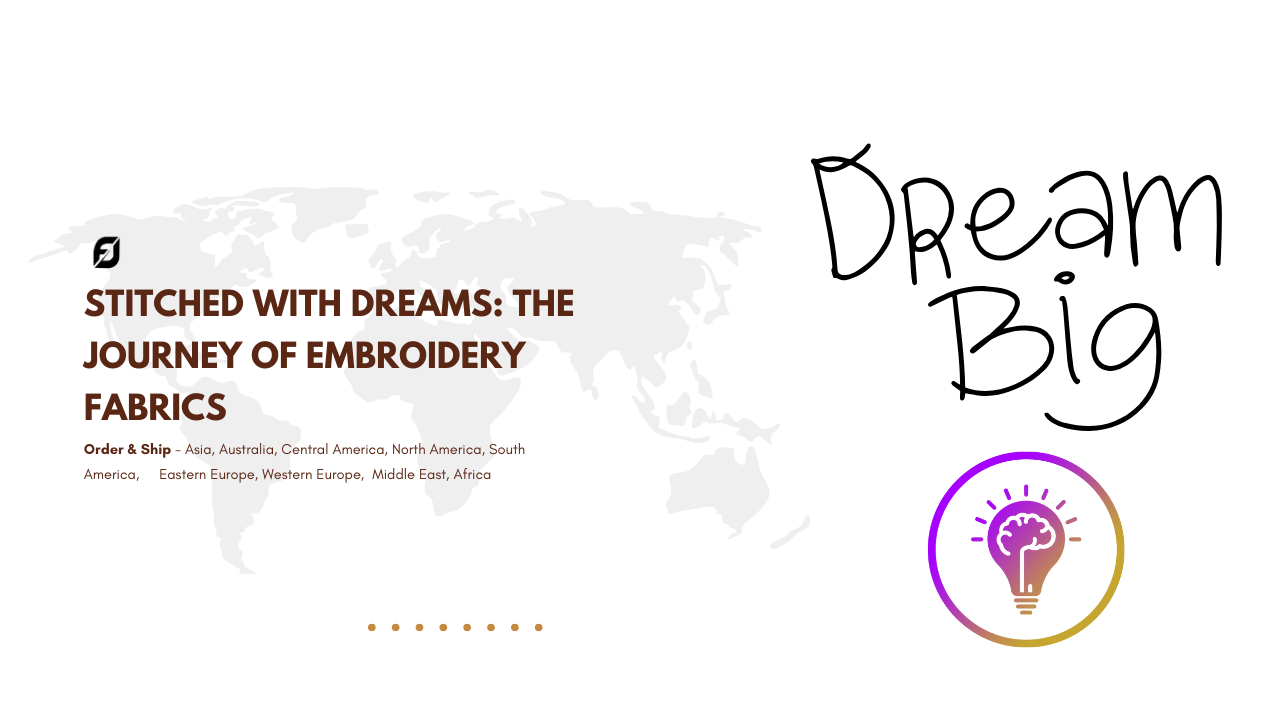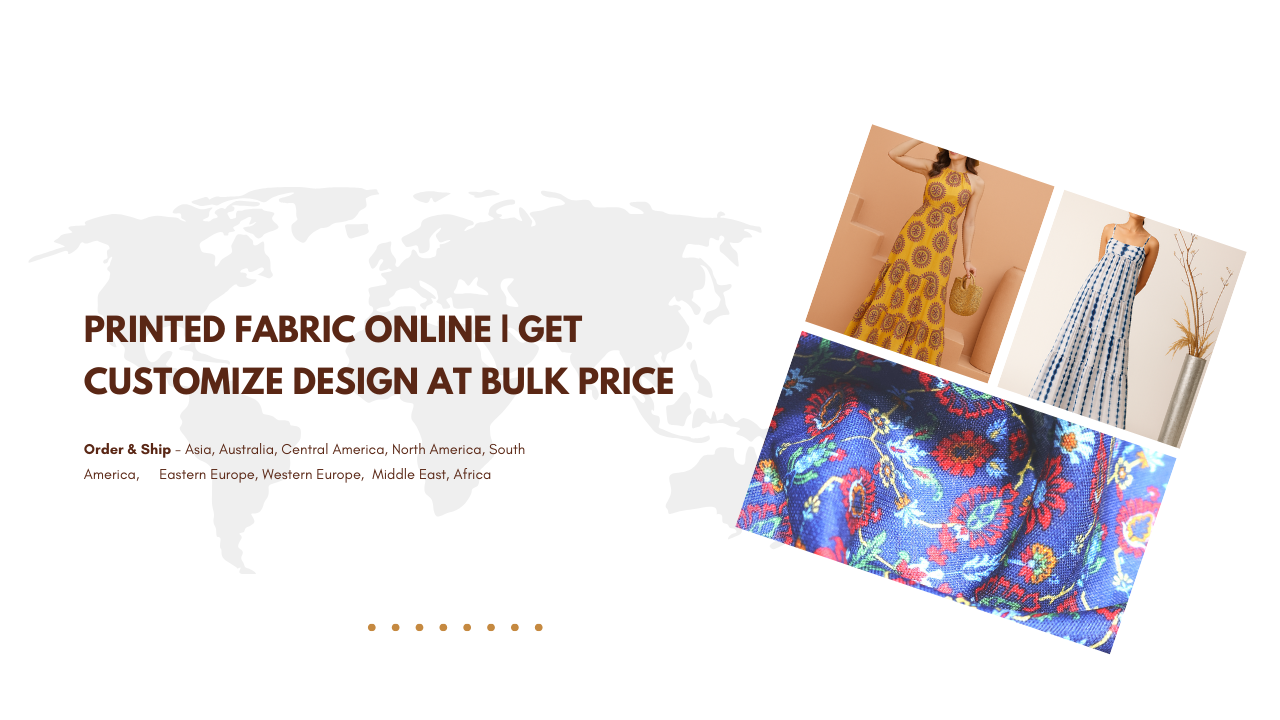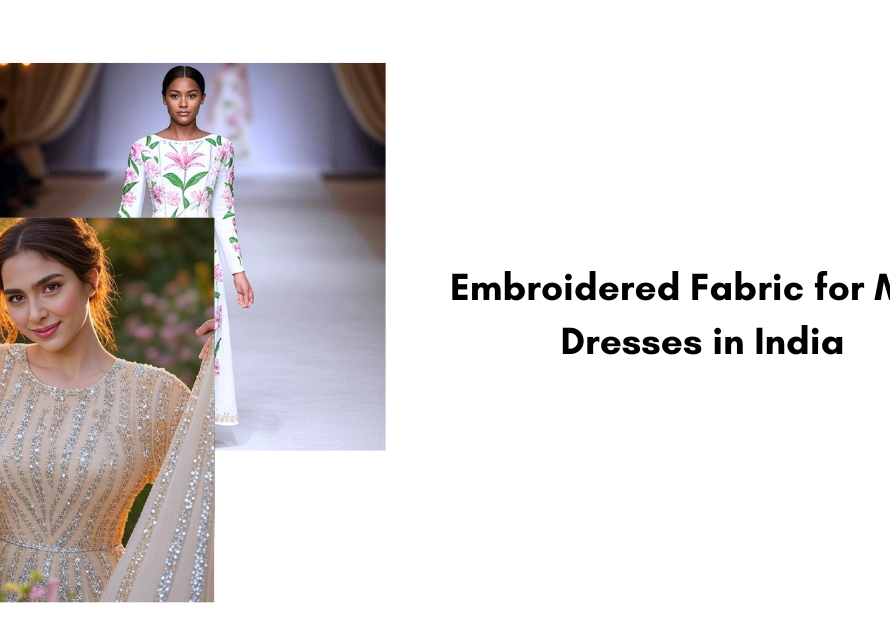When it comes to selecting the perfect fabric for garments, one might come across various options, including Cotton Embroidery fabric and Organic Cotton fabric.
Though they may seem similar at a glance, there are distinct differences between the two that impact their durability, cost, and overall sustainability.
Difference Between Cotton Embroidery Fabric and Organic Cotton Embroidery Fabric
The Basics of Cotton Embroidery Fabric
Cotton Embroidery fabric is known for its durability and long-lasting quality. This is because it undergoes a comprehensive processing method that ensures the fabric is robust and resilient. The intricate process involves multiple steps, including cleaning, spinning, weaving, and finishing. Each of these steps enhances the fabric’s strength, making it an excellent choice for garments that need to withstand frequent use and washing.

The Nature of Organic Cotton Embroidery Fabric
In contrast, Organic Cotton Embroidery fabric is cultivated and processed with minimal intervention to preserve its natural state. Organic cotton is grown without the use of synthetic pesticides and fertilizers, making it an environmentally friendly option. However, this minimal processing can affect the fabric’s durability. Organic cotton tends to be softer and more susceptible to wear and tear over time, which may lead to a shorter lifespan for garments made from this material. Additionally, the careful cultivation and processing of organic cotton contribute to its higher cost.
Durability and Cost Considerations
While Cotton Embroidery fabric is celebrated for its durability and longevity, Organic Cotton Embroidery fabric is often valued for its eco-friendly attributes and softness. The thorough processing of regular cotton ensures that garments made from this fabric can endure extensive use, making them a cost-effective option in the long run. On the other hand, the minimal processing of organic cotton, while gentle on the environment, may result in garments that do not last as long and are more expensive due to the sustainable farming practices involved.
Madhav Fashion: A Commitment to Sustainability
Madhav Fashion stands out as a pioneer in the textile industry, emphasizing sustainability in all its fabric production. Whether it’s Embroidery fabric or plain fabric, Madhav Fashion ensures that each piece is crafted with an eco-conscious approach. The brand’s commitment to sustainability not only helps in reducing the environmental impact but also establishes it as a globally recognized name in the fashion industry..

By focusing on sustainable practices, Madhav Fashion ensures that their fabrics are not only high in quality but also contribute positively to the environment. Their dedication to creating durable, sustainable fabrics aligns with the growing demand for eco-friendly products in the global market.
Understanding the differences between Cotton Embroidery fabric and Organic Cotton Embroidery fabric is essential for making informed decisions about garment selection. While Cotton Embroidery fabric offers unmatched durability and cost-efficiency, Organic Cotton Embroidery fabric provides a softer, more eco-friendly alternative. Brands like Madhav Fashion, with their commitment to sustainability, offer the best of both worlds, ensuring high-quality, environmentally conscious fabric options for consumers worldwide.
FAQ on Cotton Embroidery Fabric and Organic Cotton Embroidery Fabric
1. What is the primary difference between Cotton Embroidery fabric and Organic Cotton Embroidery fabric?
The primary difference lies in the processing and cultivation methods. Cotton Embroidery fabric undergoes a comprehensive processing method, which includes cleaning, spinning, weaving, and finishing, ensuring a durable and long-lasting fabric. Organic Cotton Embroidery fabric, however, is grown without synthetic pesticides and fertilizers, focusing on preserving its natural state with minimal processing. This eco-friendly approach results in a softer fabric that may not be as durable as regular cotton due to the lack of extensive processing. Thus, while regular cotton is robust and cost-effective in the long run, organic cotton offers a more sustainable and environmentally friendly option, albeit at a higher cost and with potentially shorter lifespan.
2. How does the durability of Cotton Embroidery fabric compare to Organic Cotton Embroidery fabric?
Cotton Embroidery fabric is generally more durable than Organic Cotton Embroidery fabric due to its comprehensive processing. The multiple steps involved in producing regular cotton fabric, such as thorough cleaning, spinning, weaving, and finishing, enhance its strength and longevity. This makes it suitable for garments that are subjected to frequent use and washing. On the other hand, Organic Cotton Embroidery fabric, with its minimal processing, tends to be softer and more susceptible to wear and tear over time. This means that while organic cotton is gentle on the environment, it may not last as long as regular cotton, making it less ideal for garments that require high durability.
3. Why is Organic Cotton Embroidery fabric more expensive than regular Cotton Embroidery fabric?
The higher cost of Organic Cotton Embroidery fabric can be attributed to the sustainable farming practices and minimal processing involved in its production. Organic cotton is grown without synthetic pesticides and fertilizers, which often results in lower yields and requires more manual labor and careful management. Additionally, the certification processes for organic farming can be costly and time-consuming. These factors contribute to the overall higher production costs of organic cotton, which are reflected in the price of the fabric. Despite being more expensive, organic cotton is valued for its environmental benefits and its softer, more natural feel, making it a preferred choice for eco-conscious consumers.
4. Are garments made from Organic Cotton Embroidery fabric as long-lasting as those made from regular Cotton Embroidery fabric?
Garments made from Organic Cotton Embroidery fabric are generally not as long-lasting as those made from regular Cotton Embroidery fabric. The minimal processing of organic cotton, aimed at preserving its natural state and environmental benefits, results in a softer fabric that is more prone to wear and tear. Regular Cotton Embroidery fabric, with its extensive processing, is designed to be more robust and durable, making garments made from it capable of withstanding frequent use and washing. Therefore, while organic cotton garments offer environmental advantages and a softer feel, they may require more careful handling and may not endure as long as their regular cotton counterparts.
5. How does Madhav Fashion ensure the sustainability of its fabrics?
Madhav Fashion is dedicated to sustainability by incorporating eco-friendly practices in all stages of fabric production. This includes sourcing raw materials responsibly, minimizing waste, and reducing energy consumption during manufacturing. For both Embroidery and plain fabrics, Madhav Fashion emphasizes using natural and organic fibers whenever possible, and ensures that any chemical processes involved are environmentally safe. Additionally, the company invests in technologies and processes that lower their carbon footprint. Their commitment to sustainability not only ensures high-quality fabrics but also aligns with global efforts to protect the environment, making their products widely recognized and appreciated.
6. What are the environmental benefits of choosing Organic Cotton Embroidery fabric?
Choosing Organic Cotton Embroidery fabric offers several environmental benefits. Organic cotton is grown without synthetic pesticides and fertilizers, which helps maintain soil health and reduce water pollution. This method of cultivation also promotes biodiversity by supporting healthier ecosystems. Additionally, organic farming practices typically use less water compared to conventional cotton farming. By avoiding harmful chemicals, organic cotton farming protects the health of farmers and nearby communities. Overall, selecting organic cotton helps reduce the environmental impact of textile production, contributing to more sustainable and eco-friendly fashion choices that support a healthier planet.
7. What makes Madhav Fashion’s fabrics recognized globally?
Madhav Fashion’s fabrics are globally recognized due to their high quality, sustainability, and innovation in design. The company prioritizes eco-friendly production methods, ensuring that their fabrics are not only durable but also environmentally responsible. Their comprehensive quality control processes ensure consistency and excellence in every piece of fabric produced. Additionally, Madhav Fashion’s commitment to staying ahead of fashion trends and incorporating unique, intricate designs, particularly in their embroidery fabrics, makes them a preferred choice for designers and consumers worldwide. Their reputation for blending sustainability with superior craftsmanship sets them apart in the global textile industry.
8. How should garments made from Organic Cotton Embroidery fabric be cared for to enhance their longevity?
To enhance the longevity of garments made from Organic Cotton Embroidery fabric, gentle care is essential. It is recommended to wash these garments in cold water with a mild detergent to prevent damage to the fibers. Avoid using bleach or harsh chemicals, as they can weaken the fabric. When drying, it’s best to air dry or use a low heat setting on the dryer to reduce the risk of shrinkage and maintain the fabric’s integrity. Ironing should be done on a low heat setting to avoid scorching the fabric. By following these care instructions, the lifespan of organic cotton garments can be extended, ensuring they remain soft and durable.
9. Why is there a growing demand for eco-friendly fabrics like Organic Cotton Embroidery fabric?
The growing demand for eco-friendly fabrics like Organic Cotton Embroidery fabric is driven by increasing environmental awareness among consumers. People are becoming more conscious of the impact their choices have on the planet and are seeking sustainable alternatives. Organic cotton offers a more environmentally friendly option as it is grown without harmful chemicals, promotes biodiversity, and uses less water compared to conventional cotton. Additionally, eco-friendly fabrics often have a smaller carbon footprint and support fair trade practices. This shift towards sustainability reflects a broader trend in the fashion industry where both brands and consumers prioritize ethical and eco-conscious products.






